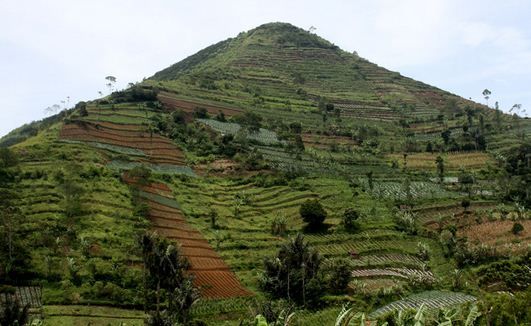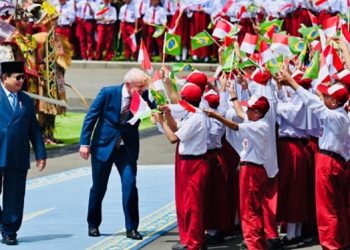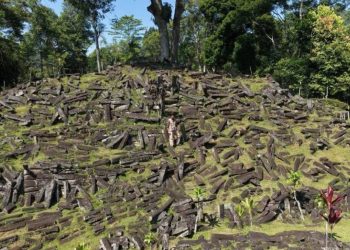Jakarta, Indonesia Sentinel — Research on the megalithic site of Gunung Padang in Cianjur, West Java, will resume after a decade-long hiatus, as the investigations halted in 2014. The announcement was made by Indonesia’s Minister of Culture, Fadli Zon.
Fadli confirmed that the research will be revived as part of the Ministry’s broader goal to prioritize cultural heritage preservation in 2025. “We will continue our research on Gunung Padang because it had been stalled for a long time,” Fadli said in a statement, as reported by Antara on January 8.
The government is keen to prioritize the study of this historical site in order to uncover deeper insights into Indonesia’s ancient history and civilization.
Located in Campaka District, Cianjur, Gunung Padang is one of Southeast Asia’s largest megalithic sites and has sparked significant debate in the field of archaeology. The site is believed to hold crucial secrets that could dramatically alter our understanding of Indonesia’s ancient civilizations.
To resume the research on Gunung Padang, Fadli plans to invite a range of archaeologists with diverse academic backgrounds to collaborate and find the most effective solutions for the research.
Gunung Padang Research
The research uncovering new historical insights into Gunung Padang has garnered significant attention, particularly the work conducted by BRIN researcher Danny Hilman Natawidjaja. His findings were published in an article titled “Geo-Archaeological Prospecting of Gunung Padang Buried Prehistoric Pyramid in West Java,” which appeared in the journal Archaeological Prospection.
According to Kompas, the research suggested that Gunung Padang could potentially be the world’s oldest pyramid, even predating Egypt’s iconic Giza pyramids.
from 2011 to 2014, Hilman’s team conducted an integrated survey of the site, using various techniques such as landscape mapping, core drilling, and advanced geophysical technologies like Electrical Resistivity Tomography (ERT) and Ground Penetrating Radar (GPR).
The results indicated that Gunung Padang is not a natural hill but a layered pyramid-like structure, built with rocks that date back thousands of years. These findings challenge conventional beliefs about early human civilization during the Holocene or Neolithic period.
Read also : Gunung Padang, The Ancient Megalithic Site Shrouded in Mystery
Controversy and Debate
However, not all experts accept these conclusions. Dr. Lutfi Yondri, a West Java archaeologist, has expressed skepticism about the claim that Gunung Padang is an ancient buried pyramid. He argues that the findings lack credible supporting data and questions the notion of pyramids in Indonesia, noting that the region’s archaeological heritage is centered around punden berundak—stepped stone structures used in ancestor worship.
“Has Indonesia ever had a pyramid culture? Don’t make things up. What exists in the archipelago are punden berundak,” Dr. Yondri emphasized.
Some international archaeologists have also cast doubt on the claims. Flint Dibble, an archaeologist at Cardiff University in the UK, noted that while the data presented in Hilman’s paper is valid, the conclusions drawn from it are misleading. “The data in the paper does not support the final conclusion that the site is very ancient, but that’s what the headline suggests,” Dibble commented.
Other archaeologists question whether the site was naturally formed, rather than being the product of human construction. The debate over the true origins of Gunung Padang continues, and the renewed research promises to shed more light on this mysterious site.
Resumption of Research
Fadli Zon acknowledged that the differing views among archaeologists regarding the Gunung Padang site reflect a natural part of the scientific debate. He emphasized the importance of fostering dialogue among scholars to find the best approach to both the research and preservation of the site.
“It is essential to bring together the different groups, the various schools of thought within our archaeology community. We need to gather these experts, let them debate, and then determine the best course of action for what should be done,” Fadli explained.
He underscored that the continuation of this research is not only for scientific purposes but also to raise Indonesia’s cultural heritage on the global stage.
Indonesia’s Strategic Plans
Fadli Zon outlined that the resumption of research at Gunung Padang is part of the Ministry of Culture’s broader strategic plan for 2025, which focuses on the preservation, development, and utilization of the nation’s cultural heritage.
In his remarks, Fadli emphasized the importance of culture as the foundation of national development and identity, especially in the face of global competition. One of the ministry’s primary goals is the preservation and protection of cultural heritage sites, many of which remain undocumented.
Additionally, the Ministry plans to conduct an inventory of museum collections across the country, from national to regional museums, to better record and appreciate cultural values as national assets.
This initiative aims to strengthen the role of culture as an integral part of sustainable development. Fadli also noted that the development of museums will be a key priority, with an emphasis on transforming them into centers for research, literacy, narrative-building, education, and entertainment.
As research into Gunung Padang continues, the site remains at the center of a heated debate among scholars and archaeologists. Whether it ultimately reshapes our understanding of ancient civilizations or remains a subject of mystery, the ongoing exploration of this monumental site underscores the importance of preserving and studying Indonesia’s rich cultural heritage for future generations.
(Raidi/Agung)
























